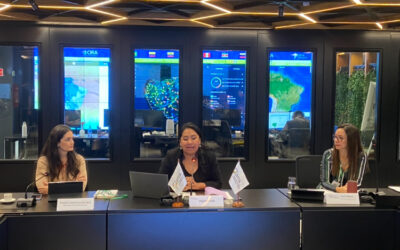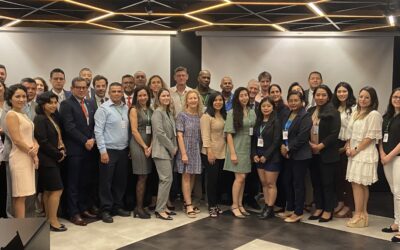It is available on ACTO’s YouTube channel
All the details about the work of the Bioamazon Project are available in video-animation format. Lasting approximately 10 minutes, and published with narration in the three official languages of ACTO Portuguese, Spanish and English, the Bioamazon video mixes an animation format with photographs and moving images to show the importance of the region, the threats and the actions that are taking place. being carried out in conjunction with ACTO Member Countries in supporting the implementation of the Convention on International Trade in Endangered Species of Wild Fauna and Flora (CITES).
The main objective of the Bioamazon Project is to guarantee that the international trade in specimens of wild animals and plants is not a threat to the survival of these species. Diagnoses are carried out on the status of the species and equipment and systems are made available for greater efficiency in the control of international trade. These are ways to contribute to the improvement of management, management, monitoring and control of wild endangered species in ACTO Member Countries – Bolivia, Brazil, Colombia, Ecuador, Guyana, Peru, Suriname and Venezuela.
Formally called the Regional Project for the Management, Monitoring and Control of Species of Fauna and Flora Endangered by Trade, the Bioamazon Project is divided into three components, seeking to reduce asymmetries between Member Countries.
In the years 2020 and 2021, nearly three million dollars were invested in the eight countries considering the actions of the three components. Around 1 million dollars were also invested in the infrastructure work, purchase of equipment and development of the platform for the Amazon Regional Observatory (ORA). The resources of the Bioamazon Project come from German cooperation through the KfW Development Bank.
Components
Through Component 1, investments are made in the development and/or improvement of information systems on biodiversity and CITES species and interoperability with the Amazon Regional Observatory (ORA). Among the examples are the development and implementation of the Biodiversity Information System of the National Museum of Natural History (MNHN) and articulation with the National Biodiversity Information System of the Ministry of Environment and Water (MMAyA) in Bolivia and the preparation of national lists of species of wild fauna included in the CITES Convention and species pressured by trade for the National Environmental Information System of Peru.
Under Component 2, investments are made in the development and/or improvement of systems for the electronic issuance of CITES licenses and their articulation with the single window systems for foreign trade. Some examples of actions are the development and implementation of the module for the use of wood and non-wood flora resources, under the National Biodiversity Traceability System of Colombia and the development and implementation of a Suriname Wildlife Management Information System, among others.
In Component 3, investments are made in studies and in the development of management and traceability systems for threatened species. Among the various examples of actions in this component are studies, in Brazil, on the population and demographic dynamics of freshwater ray species Potamotrygon wallacei (River Negro) and Potamotrygon leopoldi (River Xingu) and a study on the dynamics and evolution of international ornamental market for freshwater rays and, in Ecuador, the elaboration of a proposal for the strengthening of the orchid value chain in the Amazon region.
Learn more about the Bioamazon Project – Conservation of Endangered Species by Trade – watching the videos on ACTO’s YouTube channel.











